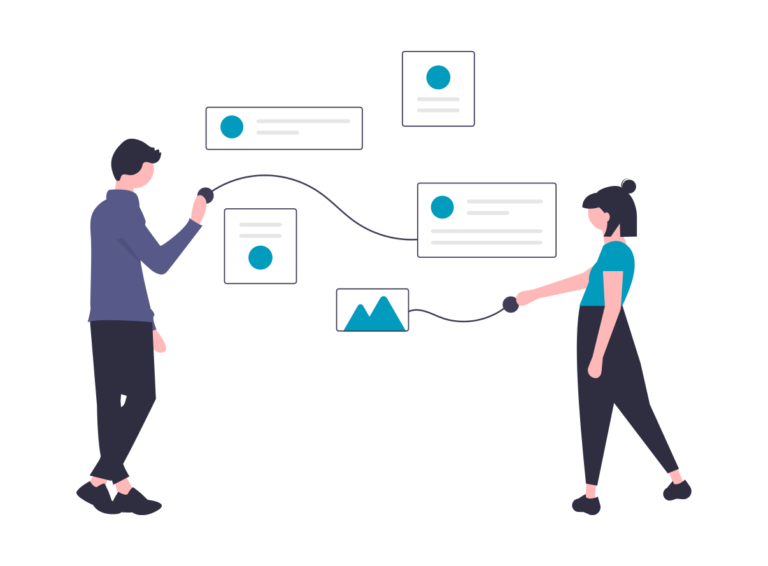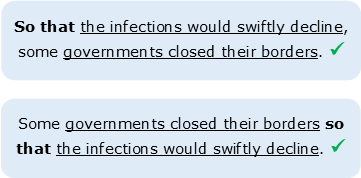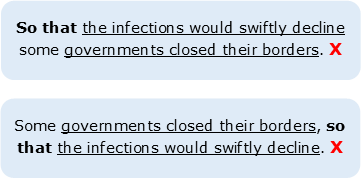Are conjunctions important in academic writing?

This is the third and final chapter about Conjunctions. To complete this reader, read each chapter carefully and then unlock and complete our materials to check your understanding.
– Review the five types of conjunction in English and one type of conjunctive adverb
– Discuss how conjunctions can improve academic writing
– Explore 5 common conjunction errors that should be avoided
Before you begin reading...
-
video and audio texts
-
knowledge checks and quizzes
-
skills practices, tasks and assignments
Chapter 3

In this final chapter on conjunctions, we turn our attention to the specifics of this word type in academic writing. We review the six types of conjunction that were explored in Chapter 2, we provide four benefits of improving a knowledge of conjunctions and we highlight five grammatical errors and how to avoid them. Should you wish to check your comprehension and progress and improve your English proficiency after completing this reader, unlock, download and complete our Chapter 1-3 worksheets using your Academic Marks.
What are the five types of conjunction?
It’s important that students are able to identify the five types of conjunction in English as each of these has a different but equally useful function. When studying the list below, note that we’ve included a sixth type which is actually an adverb and not a conjunction (the conjunctive adverb):
- coordinating conjunctions such as ‘and’ and ‘but’ are used to join words, phrases and clauses together that are of equal importance. [Numerous studies have been conducted into this, but none of them were conclusive.]
- correlative conjunctions such as ‘both…and’ and ‘either…or’ also join words, phrases and clauses of equal importance; however, these may be composed of words or phrases that are placed at separate ends of an expression. [Both the tutor and the students arrived early to class.]
- subordinating conjunctions such as ‘because’ and ‘although’ join dependent clauses to independent clauses, highlighting the importance of the independent clause in the process. Among other functions, this conjunction type may express cause, comparison and concession. [Even though the study was a success, the theory is still unproven.]
- temporal conjunctions such as ‘as soon as’ and ‘long before’ are a type of subordinating conjunction that express aspects of time. [The results will be ready as soon as the data has been interrogated.]
- complementisers such as ‘that’ and ‘whether’ are another type of subordinating conjunction, one that joins object dependent clauses to their related independent clauses. [Jones (2020) believed that the results would show a positive correlation.]
- conjunctive adverbs such as ‘however’ and ‘therefore’ join independent clauses together and express functions such as clarification, consequence and contrast. [The results were inconclusive; therefore, the experiment was conducted again.]
How do conjunctions improve academic writing?
There are four clear ways in which a confident use of conjunctions is able to improve a piece of academic writing: (1) conjunctions can improve grammar by avoiding sentence run-ons, (2) they can make a piece of writing more dynamic through the inclusion of a variety of sentence structures, (3) they can improve coherence and cohesion by connecting ideas together, and (4) they can show sophistication through the expression of nuanced relationships between ideas.

To see this in action, compare the second paragraph of our example essay about lithium. While the first paragraph is devoid of conjunctions, the second uses them accurately. Which iteration do you think is clearer, more concise and has a more sophisticated structure and grammar?
1) Scientists believe something about lithium. It was likely created with the events of the Big Bang 13.7 billion years ago. As with many resources, this element was formally discovered in the early 1800s. This was after the development of science. This was also after the development of technology. One thing is now understood. Lithium can be found in two primary environments. One is mines, the other is brine water. The former refers to the lithium found in hard-rock formations such as in spodumene and petalites. Swedish physicist Johann August Arfvedson discovered lithium in 1817 during the analysis of petalites (a type of mineral). It then took approximately fifty more years to isolate the lithium compound. This was done by using an electric current to cause a chemical reaction known as electrolysis. The combination of two things through electrolysis is considered an expensive production process. The first thing is ore mining minerals. The second is extracting the lithium. It was a very expensive predominant method for producing lithium up until the late 1990s. From this point onwards, it then became increasingly common to instead extract lithium from brine water. Producing lithium in this way costs almost half as much as mining it. (201 words)
2) Scientists believe that lithium was likely created with the events of the Big Bang 13.7 billion years ago, but as with many resources it was not until the development of science and technology in the early 1800s that this element was formally discovered. It is now understood that lithium can be found in two primary environments: mines and brine water. The former refers to the lithium found in hard-rock formations such as in spodumene and petalites. It was during the analysis of petalites (a type of mineral) that Swedish physicist Johann August Arfvedson discovered lithium in 1817 – although it took approximately fifty more years to isolate the lithium compound. This was done by using an electric current to cause a chemical reaction known as electrolysis. The combination of mining such ore minerals and extracting the lithium through electrolysis is considered an expensive production process. This was nevertheless the predominant method for producing lithium up until the late 1990s. From this point onwards, it then became increasingly common to instead extract lithium from brine water as producing lithium in this way costs almost half as much as mining it.
Which conjunction errors should be avoided?
There are five conjunction errors that students often make that, through a process of careful editing and proofreading, can be avoided. These are listed below.
Error 1: Using the Wrong Conjunction
Because conjunctions carry meanings which identify relationships between the words, phrases and clauses they join, it’s important that students select their conjunctions carefully. Choosing the wrong one simply because it looks right will likely only have a negative impact on the coherence of your writing.


Error 2: Beginning with Coordinating Conjunctions
Another common mistake when it comes to academic style is to begin a sentence with a coordinating conjunction such as ‘and’, ‘so’ or ‘but’. While this is certainly possible and common in casual speech, it is considered much too informal for academic writing and should be generally avoided:


Error 3: Incorrectly Punctuating Subordinating Conjunctions
One easy-to-forget rule is that when a subordinating conjunction and its subsequent dependent clause begins a sentence, the dependent clause and independent clause should be separated with a comma (,). When the independent clause comes first, however, before the subordinating conjunction and the dependent clause, then the absence of a comma is considered grammatical:


Error 4: Incorrectly Punctuating Conjunctive Adverbs
Punctuation also plays an important role when using conjunctive adverbs correctly. To adjoin two independent clauses with words such as ‘however’ or ‘therefore’, for example, students should remember to either us a combination of a semicolon (;) and a comma (,) or a full stop (.) and a comma (,):


Error 5: Confusing the Reader by Removing the Complementiser
Finally, when introducing object dependent clauses that take ‘that’ as an optional complementiser, a good rule to follow is to keep that complementiser in place. Though it’s OK to delete the complementiser in speech, in writing you may create ambiguity by doing so that could cause the reader to have to read that sentence again – affecting the coherence of your writing. For instance, in the example below without ‘that’, the reader may for a second understand that Jones believed the results rather than believed that the results would show a positive correlation.


Very well done on completing this short reader on conjunctions in English!
Downloadbles
Once you’ve completed all three chapters in this short reader about Conjunctions, you might then wish to download our Chapter Worksheets to check your progress or print for your students. These professional PDF worksheets can be easily accessed for only a few Academic Marks.
Chapter 1 explores the topic: What are conjunctions and how do they function? Our Chapter 1 Worksheet (containing guidance, activities and answer keys) can be accessed here at the click of a button.
Chapter 2 explores the topic: What are the five types of conjunction in English? Our Chapter 2 Worksheet (containing guidance, activities and answer keys) can be accessed here at the click of a button.
Chapter 3 explores the topic: Are conjunctions important in academic writing? Our Chapter 3 Worksheet (containing guidance, activities and answer keys) can be accessed here at the click of a button.
To save yourself 2 Marks, click on the button below to gain unlimited access to all of our Conjunctions Chapter Worksheets. This All-in-1 Pack includes every chapter, activity and answer key related to this topic in one handy and professional PDF.
Collect Academic Marks
-
100 Marks for joining
-
25 Marks for daily e-learning
-
100-200 for feedback/testimonials
-
100-500 for referring your colleages/friends